This is one of many posts at Netninja dissecting puzzle design. You may want to explore the “puzzlegames” tag for more. Also note that major spoilers lie ahead.
As readers of this blog may know, I help run a monthly puzzle-solving event called Puzzled Pint. (And if you look at the website right now, you’ll see the location puzzled posted for Tuesday’s events in Portland, Seattle, London, Chicago, Phoenix, and the Bay Area.) We distribute everything that Puzzled Pint creates under a Creative Commons license. You can find all those puzzles in the archives, available for non-commercial use. This year, ARGFest asked us to build FestQuest, a lightweight puzzle hunt that doubles as a walking tour of the city. Instead of just dumping all the puzzles on a website, I thought it would be more fun to walk through some of the behind-the-scenes revisions and work.
Bag Handouts
Each convention bag received a little Puzzled Pint sampler handout. The simplest one was new. We culled two of the puzzles from the archives. We designed the fourth, a standard no-frills cryptogram, fresh. The front side has some fun bee-related puzzles. The reverse alludes to time travel and, if you decode the cryptogram beyond the quote, talks about being recruited to save humanity.
Although a few people saw that the star-ratings weren’t stars for the four-star puzzle, I’m not sure that folks noticed until after FestQuest began that there were four variants of the same cryptogram. The PDF linked from the above thumbnails contains all four variants.
The Puzzled Pint playtest group solved the cryptogram by hand. This is a reasonable attack, given the coded text is so long and falls fairly well into standard letter distributions. I had expected ARGFest folks to just plug it directly into a cryptogram solver (one of my favorites is quip qiup, which spits out the correct answer in less than a second). I was a little surprised to see one team, having noted that the quote’s author is in plaintext, look up famous Jonathan Swift quotes to discover which one fit. I love seeing people attack puzzles in unexpected ways. That’s part of my hacker upbringing, I guess.
[answers]
Kickoff Puzzle
The FestQuest kickoff puzzle was an unconventional cryptogram — a polyalphabetic variant that you can’t just plug in to a solver.
In addition to recruiting the team on a mission to save the world, its job was to be an ice-breaker, allow for distributed solving, and used one of my favorite puzzle tropes: “you had the key to the answer with you the whole time!”
Once you hit the a-ha moment of noticing the four symbols in the cryptogram match the four variants of the handouts, it’s just a matter of solving the handout cryptogram once and copying the letters over to the kickoff puzzle.
[answer]
REVISIONS
This puzzle went through some minor revision after playtesting. The coded alphabet is assigned through a variant of keyword cipher. To generate the code key, you pick a keyword, strip out the duplicate letters, then fill in the remainder of the alphabet after. For example, with DIAMOND:
Plaintext: ABCDEFGHIJKLMNOPQRSTUVWXYZ
Ciphertext: DIAMONBCEFGHJKLPQRSTUVWXYZ
This is a horribly unsatisfying solve because the letters from P onward — including the popular letters R, S, and T — match between the plaintext and ciphertext. Reversing the alphabet from Z to A fixed that. I overheard one team notice that the keyword for circles used some variant of “disc” with extra letters. This is because both circle and disc popped out matching letters in the middle of the alphabet. Given more time, we may have used a totally different shape (for instance, replacing circle with hex or pentagon) for a more satisfying holistic solve. Due to hard deadlines we went with “good enough.”
Who-Doku
The first stop along the tour was Waterfront Park, specifically the Battleship Oregon Memorial. Teams picked up an unusual sudoku.
It is a standard sudoku except crossword-style clues replace the hard-coded starter numbers. Certain spaces have circles, indicating data to “pull out” from the grid. Indexing those into the alphabet (one of the simplest codes in the handy-dandy code sheet) spells out the answer.
[answer]
REVISIONS
The original proof-of-concept puzzle had fewer clues and a rather unsatisfying answer. (As I recall, it was something like “bad ice dog.”) The next revision featured a better answer, but the live playtest the weekend before ARGFest revealed a flaw in the puzzle. There were not enough clues given to arrive at a single unique answer. This dry run also had players going out to Saturday Market, which is a wonderful touristy spot. Our playtesters quickly discovered it was a little too busy to find a spot to sit down and finish a puzzle. It was also further out of the way than the other spots, adding to the length of the walk.
Defenders of the Park
The next step of the tour was Mill Ends Park, the smallest park in the world. This featured topo maps and army men.
Find the right placement of the troops, who hold a message for you.
REVISIONS
The prototype of this puzzle used actual green plastic army men. Many boys know from their childhood that a magnifying glass, matches, or lighter will let you bend and warp the small plastic figures. It turns out that baking them in the oven also makes them malleable enough to bend their arms into semaphore shapes. The underside of the bases held the printed matching-pictures. This led to a pretty fun a-ha moment.
I was out of town and off-the-grid when the decision came down to use printed tokens instead of army men. I can only assume it was some combination of the semaphore being a little ambiguous (we had problems with elbows and arm-direction vs. forearm-direction in the prototype playtest) and the production work involved in creating multiple sets of army men.
Not in Portland / QRossword
This puzzle is a crossword, but with numbers. You pull some of the numbers from a signpost sculpture at Pioneer Courthouse Square. Others are trivia. I’m just glad that, despite the Major League Soccer event held that weekend in The Square, the signpost was still visible.
I heard, after the fact, that one team developed an amazing system for solving this one. The divided the tasks: pulling numbers from the sign, looking up trivia on Google, performing the math, converting to binary, and filling in the puzzle. They even took it a step further. After entering each answer in the grid, they’d attempt to QR scan the puzzle. Because there’s a certain amount of redundancy in QR code data (to compensate for damaged codes, poor lighting conditions, and bad cameras), they figured they didn’t necessarily need to have all the answers entered before the QR scanned. (They were right.)
[answer]
REVISIONS
First off, I have to say that this puzzle is a jab at Steve Peters’ hate of QR codes. There were very changes to the puzzle itself between prototype and final. The main one was that one of the answers literally solved to zero, with no shading in the grid. The playtesters didn’t think that was very satisfying. We shifted the blank up by one; a zero is still a major part of the math leading to the answer (lots of near-impossible trivia multiplied by zero), but you do end up shading in a box for that question.
Cinnanom Cookies
The next stop was a quick jump over to Director Park for one of the tastiest puzzles I have ever experienced.
Accompanied with this were a set of delicious cinnamon alphabet cookies:
- A x 6
- C x 3
- E x 8
- F x 1
- G x 1
- I x 5
- L x 4
- M x 1
- N x 6
- O x 1
- P x 1
- Q x 1
- R x 3
- T x 5
- U x 2
- V x 1
[answer]
REVISIONS
The prototype of this puzzle had a single list of words from which you had to deduce pairs. Half-way through a rough solve we all concluded that it would be easier to split the words into two columns, picking one from each. A few of the words changed after playtesting for clarity.
Book Hive
The Powell’s puzzle features colorful hexes with book departments.
When you arrange the hexes so that the department labels are adjacent to their room colors, you can spell out the two answer words around the central hex.
[answer]
REVISIONS
In test solving the prototype puzzle, we made a few mistakes. We were not actually at Powell’s that evening. It was one of our Tuesday location-scouts for Puzzled Pint. It turns out that Powell’s has shuffled departments between the colored rooms over the years. The current state of things doesn’t match the October 2003 PDF map that comes up first in a Google search. In fact, due to construction, the current state is a little different from the state seen earlier in 2014. We had to be certain that: (1) the puzzle matches the real world and (2) everyone had a copy of the “2014 Construction Map” in their handout so that everyone was working from the same (correct) set of data.
Honeycomb Drive
Each location gave the teams a piece of “the Honeycomb Drive.” Once a team collects all of the pieces, a quick puzzle shows how to assemble it.
Information from the previous five puzzles more-or-less feed into this one. This gives you the final answer word to disable the evil AI.
[answer]
REVISIONS
If anyone wants to have their very own Honeycomb Drive, I have the source files available in a Ponoko-compatible format.
Until pretty late in planning, this was called simply “The Device” or “The Communications Device.” Ana picked out Honeycomb Drive as a great “marketing name” only a few weeks before ARGFest.
This puzzle went through three physical revisions and two revisions of the corresponding paper handout. I started the physical design months previous to the event. Originally, each piece was giant. It took up a satisfying amount of space in a clasp envelope.
Using foamcore board as a prototyping mechanism, I felt the assembled device was a little too big. Additionally, I wasn’t sure if I was going to make it through the local tech shop or Ponoko, so I shrunk it and optimized the design to fit on Ponoko’s “P1” acrylic sheet.
I eventually did go with Ponoko. The local tech shop is easy and great for woodworking and metalwork and have an ever-expanding electronics workbench. Their laser setup still requires a lot of babysitting. They don’t have a materials library and don’t let you use the cutter directly. I end up having to go to Tap Plastics myself to grab the acrylic, then setting up an appointment to meet someone at the laser cutter. A 20-minute job takes several hours out of the day (and takes a few days lead time to set up). Since I was only going to be out of town for one day in the two weeks leading up to ARGFest, I went with Ponoko. This also accounts for some of the color choices (and corresponding team names). Their translucent color selection is a little odd.
The first manufactured revision of this puzzle had etched words that, in my opinion, were a little too small. The playtesters had no problem reading them, but I wasn’t happy with the clarity. This was on red acrylic and was a backup “Red Team” in case we had enough people playing to warrant five teams. It also had pieces that fit a little loosely. I designed the pieces for 3mm acrylic. I think the slots ended up at 3.1mm to accommodate a little bit of tolerance difference. Unfortunately, this batch of “3mm” acrylic from Ponoko actually measured out at 2.7mm, giving a whole lot of slop space. Most of the laser cut projects I work on are enclosures; I err on the side of extra slop because the panels are held in place with tension bolts. (See The Chubby Tricorder Project for an example.) Given more time, or were I to do this again, I would have put little tension/friction bumps in the slots to better hold things in place (and possibly corresponding etch-points to better capture them in place).
The second, and final, manufactured version was the one everyone played with on game day. I didn’t feel I had enough time, given my limited availability, to tweak much more than font size.
As far as paper-handout revisions go, the first one was more activity than puzzle. In fact, a few of the answers weren’t pulled directly from the puzzle answers (“green” for the army men, “cinnamon” for the cookies) because, by the time I needed final-ish designs of the rotors, those puzzles were still in a prototype form. DeeAnn did a great job at rewriting them into a more puzzle-y form.
ClueKeeper
 We used ClueKeeper to handle all of the back-end logistics: validating answers, distributing hints, and leading teams to their next location. Although I didn’t do any work designing the ClueKeeper end of the puzzle hunt, I did learn how amazingly flexible it can be. We’re starting to work on the design of a replayable Portland hunt, reusing a couple of the FestQuest locations. If you’re in Portland, stay tuned.
We used ClueKeeper to handle all of the back-end logistics: validating answers, distributing hints, and leading teams to their next location. Although I didn’t do any work designing the ClueKeeper end of the puzzle hunt, I did learn how amazingly flexible it can be. We’re starting to work on the design of a replayable Portland hunt, reusing a couple of the FestQuest locations. If you’re in Portland, stay tuned.
Conclusion
I hope this gives a little more of a behind-the-scenes view of how Puzzled Pint handles puzzle design. At a minimum, puzzles go through a prototype, at least one playtest, and final QC before the public sees them. With events in live spaces, there’s a playtest or dry run. This tests not only the puzzles, but the environment. This is also why we scout bars on Tuesday nights — to better see what the crowd might look like, to see if we run into event clashes like music or trivia nights, and so on. In fact, this identified the crowding problem with using Saturday Market as a location.
If this hasn’t scared you away from writing puzzles or running hunts, Puzzled Pint is always looking for guest authors and ClueKeeper is happy to talk to you about their authoring tools and infrastructure. And if you think you want a longer puzzle hunt, I encourage you to get involved with DASH as a player, a playtester, or volunteer.
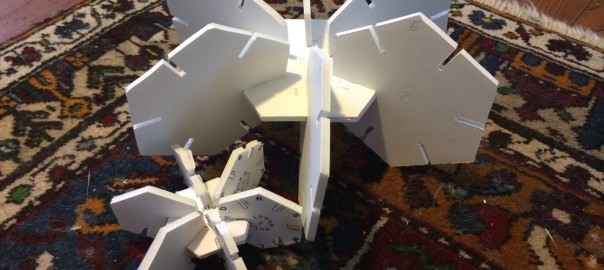
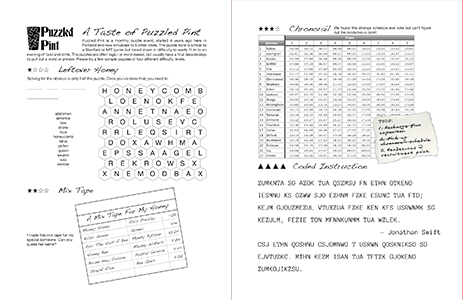
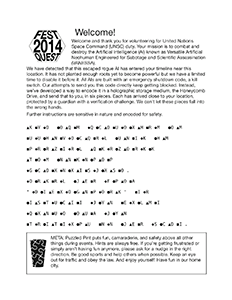
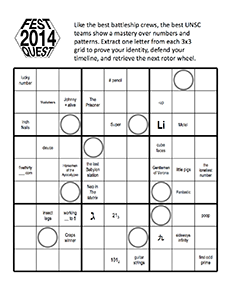



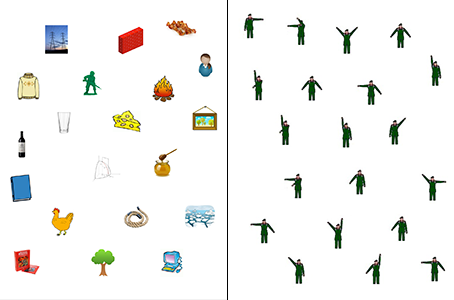
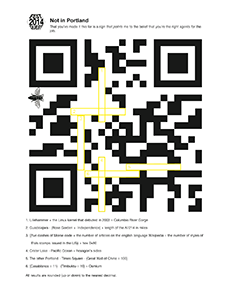

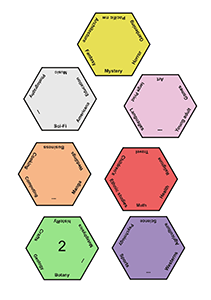


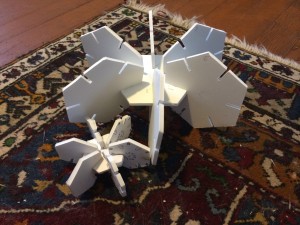

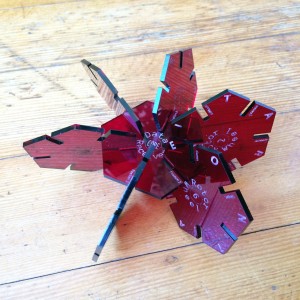
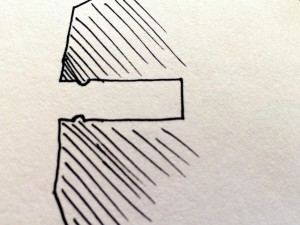
I enjoyed this trail quite a bit. I have a few comments:
1. I did the whole set of puzzles you provided in the ARGFest bag the first day, and I was one of the people who used the “Search for quotes by Swift” method of solving the cryptogram. Once I’d decoded, I put the letters into order to look for an encoding method, but since the back-end of the letters were reversed, my mind shut down when it didn’t work out simply. Unfortunately, the person I did the solving with, our friend hmrpita, also had a Triangle version, so I didn’t think much more about it.
2. On the day of ARGFest, we figured out the method for the puzzle pretty quickly. I also realized the coding was TRIANGLEZYX… However, somehow we ended up being the last group out (and never caught up). Part of the problem was that only pita and I had solved the cryptogram, so with the information provided, we went with DIAMONZYX…, SQUAREZYX…, and CIRLEZYX… We also split the 3 supplied code sheets up so that one person could fill in the code for each, requiring us to slow down when the fourth code was added, then refiguring once we realized the circle somehow wasn’t CIRLE.
3. I’m so used to electronic versions of Sudoku, that solving without standard note-taking tools and automatic error-checking has made me soft.
4. Two comments are regarding ClueKeeper. I had had it installed for a while, but hadn’t had a chance to use it til that day. Adding 8 players to a group was a bit slow. Not sure, but if multiple people have phones with it installed, it seems like there should be an easier way. NFC? QR Codes?
5. The other ClueKeeper item is: my experience was that we’d get a puzzle packet, enter the starting code, set the phone down to get solving, find a solution, open the phone, and then be forced to close a number of “hint” notifications that had queued up while we were solving. It seems like those should only pop up if I decide I need them, rather than informing me of their presence without me asking. They didn’t actually provide me with hints, just a bunch of notifications getting in the way. I admit it was my first time using the app, so there might be a setting to make that go away, but I was more invested in the trail than in figuring out the app settings.
Overall, I have to say it was a great trail. I felt like it was totally appropriate. The solutions were elegant. Everything I love in a puzzle trail.
Thanks to you, your testers and associates for making a great fun trail.
Hey thanks, Ariock. Your comments, praise, and criticisms mean a lot to me. I’m glad you liked it. The cryptogram was definitely new territory for Puzzled Pint, with both the extra layer and the collaboration. I think it worked out okay, but could have been better. The [not] “Circle” thing still bugs me. With the Sudoku, I think TheBruce just plugged the values into an automatic solver vs. hand-solving it. 🙂 I hand-solved it in playtest, but I tend to hand-solve anyway.
We sort of deviated from the norm with regard to ClueKeeper and team usage. FestQuest teams (I’ve been told, since it’s been about 5 years since I’ve gone) arise on the fly in the moments before the puzzle hunt. The two typical ClueKeeper scenarios I’m aware of are: (1) an individual goes on a hunt by herself or with some friends, but with a single device and (2) the DASH puzzle hunt style in which teams are known ahead of time. Each team captain gets a team code several days before the event and can add team members at their leisure. There’s a separate start code (such as what was written on your puzzle envelopes) given out in person at event start.
Maybe next year FestQuest needs a sign-up sheet ahead of time. That might better indicate how many people/teams to expect and what size final location to end up at (assuming the destination isn’t just back at the hotel as it was this time).
I think we went a little heavy on the hints with ClueKeeper, which was also a bit counter to its typical usage scenario. Usually there are fewer and they’re spaced further apart. Additionally, the more competitive hunts use points-based scoring. They don’t offer up hints, so they don’t have alerts telling you hints have been time-unlocked. Instead, you have to buy them, decreasing your possible score for that location.
For both of these, I’ll let the developer know. We were definitely an edge case to its current target, but CK is trying to expand and try out new forms of hunt, so maybe it’ll become less edgy in the future.